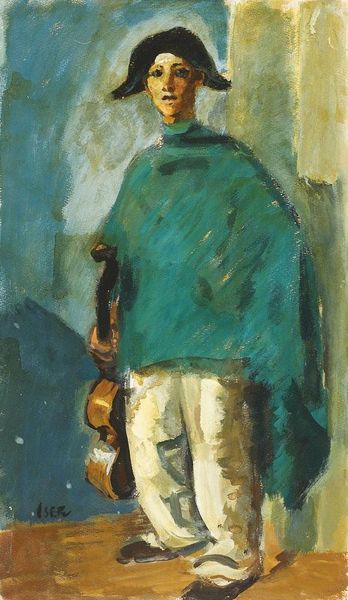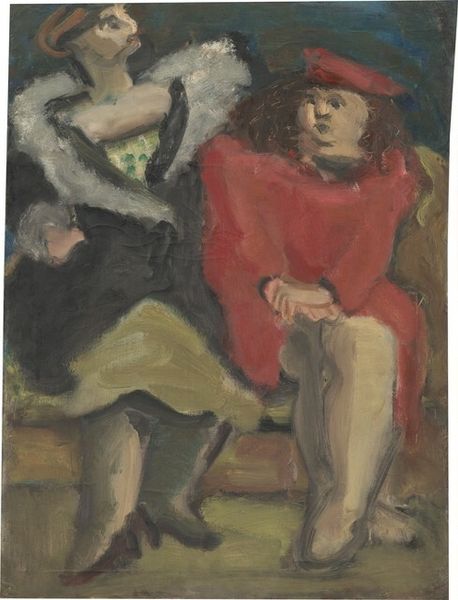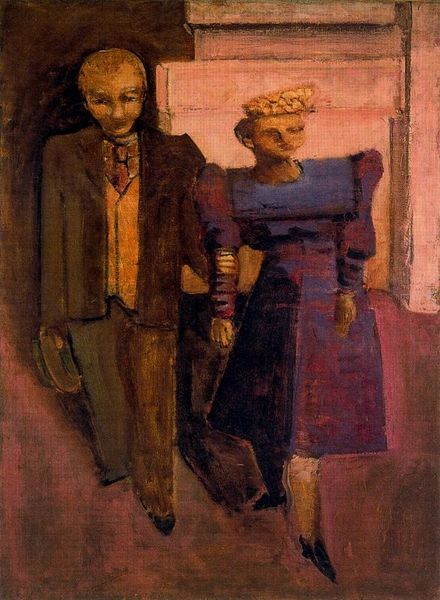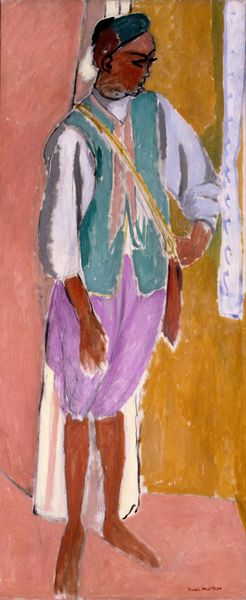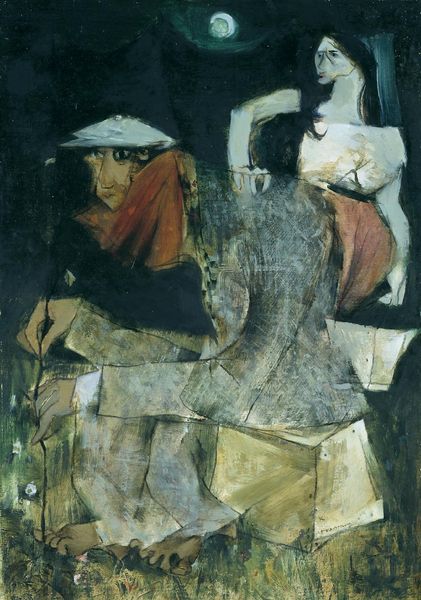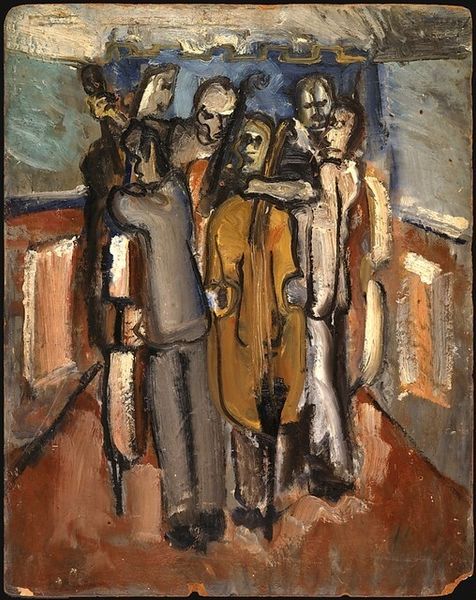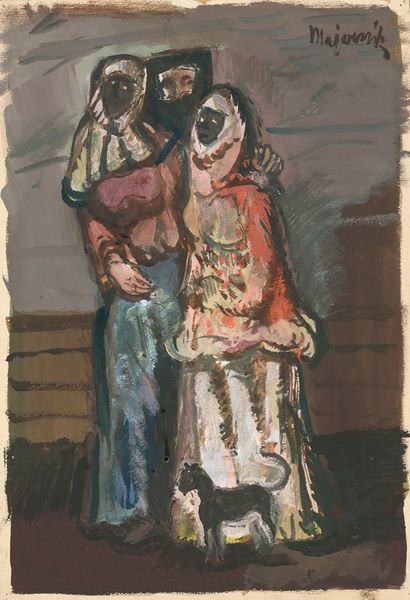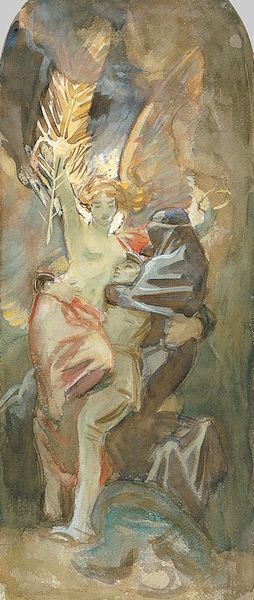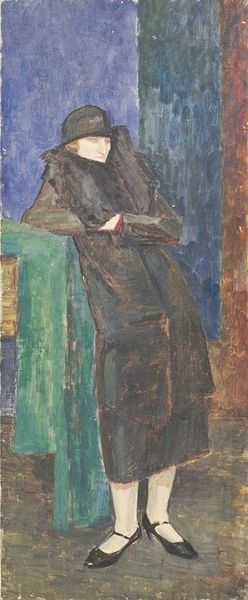
Dimensions: overall: 81.5 x 60.9 cm (32 1/16 x 24 in.) framed: 96.7 x 76.5 x 8.7 cm (38 1/16 x 30 1/8 x 3 7/16 in.)
Copyright: National Gallery of Art: CC0 1.0
Curator: This canvas presents Mark Rothko's "Untitled (man and woman holding hands)," painted between 1936 and 1937. It is oil on canvas. Editor: The figures look melancholic. I am immediately struck by the muted palette; everything appears veiled, a bit grim, despite the hints of colour. What do you make of the almost grotesque portrayal? Curator: Rothko here depicts the figures through a lens of distorted representation, pulling from Expressionism's toolkit of emotional amplification through abstracted forms. We observe flattened shapes and jarring colour juxtapositions, like the bright blue hood. Editor: Placing this artwork in the mid-1930s is so important. Given the historical moment, I cannot help but interpret it through the socio-political climate. What appears as a portrait might mirror a deeper commentary on relationships strained under the pressures of pre-war anxieties. Do you agree with that analysis, viewing the figures as representatives of societal fracture? Curator: That is possible. Alternatively, by dissecting the composition, we find that the figures almost blend into their background. Notice the intentional ambiguity created by the near-identical tones used for figures and surroundings, challenging conventional notions of form and space. The brushstrokes, though visible, are applied with a looseness that flattens the pictorial space. Editor: Certainly. But shouldn't we ask who exactly were Rothko's patrons at this time, what their backgrounds were, and what anxieties haunted their social circles? These are wealthy collectors; they're living through the Depression. They may well see an echo of their lives in the alienation of these figures. Curator: Perhaps. In terms of style, this is obviously pre-dating his iconic colour field paintings, but we see his future trajectory even in this nascent stage, particularly his concern with surface and how colour interactions trigger emotional responses. Editor: Right, his journey into abstraction was not a stylistic leap but rather an evolving commentary on human emotion during turbulent times. We may never pinpoint Rothko's definitive intent, but appreciating the dialogue between form and context greatly enriches our understanding of his creative output. Curator: Precisely, seeing how formal elements intersect with potential narratives of a generation creates richer experiences for all visitors. Editor: Indeed. On balance, perhaps we find that even in art's most distorted portrayals, it reflects the spirit of its age.
Comments
No comments
Be the first to comment and join the conversation on the ultimate creative platform.

